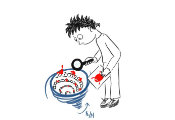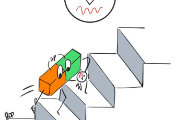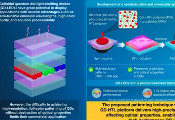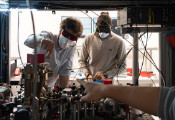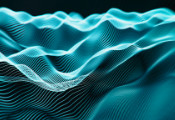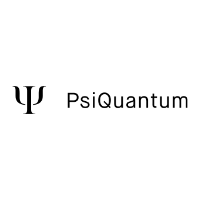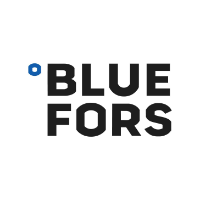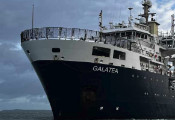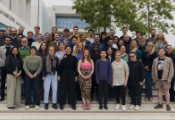Scientists Create a New Form of Light Matter in a Quasicrystal
October 23, 2025 -- Researchers from the Skolkovo Institute of Science and Technology (Skoltech), in collaboration with colleagues from the University of Iceland, the University of Warsaw, and the Institute of Spectroscopy of the Russian Academy of Sciences, have for the first time created a reconfigurable polariton 2D quasicrystal. They demonstrated that this unique state of matter exhibits long-range order and a novel type of phase synchronization, opening new pathways for research into exotic phenomena such as supersolids and superfluidity in aperiodic settings.
The breakthrough, published in the prestigious journal Science Advances and supported by Grant No. 24-72-10118 from the Russian Science Foundation, was achieved using exciton-polaritons — hybrid quasiparticles that are part light and part matter. By arranging these polaritons in a Penrose tiling, a famous aperiodic pattern with five-fold symmetry, the team observed the emergence of a macroscopic coherent state where the individual nodes synchronized in a nontrivial way, unlike anything seen in conventional periodic crystals.
The allure of the aperiodic
Since their controversial discovery by Dan Shechtman in 1984, for which he later won the Nobel Prize, quasicrystals have fascinated scientists. They possess a paradoxical structure: They lack the repeating pattern of ordinary crystals yet exhibit a strict, long-range order. In our life, the unique structure of quasicrystals can be used to create extremely durable, nonstick coatings for frying pans and razor blades, making them last significantly longer. In the future, quasicrystals may lead to more efficient insulation for buildings and improved LED technologies for lighting.
From a fundamental point of view, quasicrystals reveal fractal energy spectra and unusual wave transport properties, such as Anderson localization of light. While studied in various electronic, photonic, and atomic systems, their behavior in a nonequilibrium, laser-driven quantum fluid remained largely unexplored until now.
The experiment: Painting with light
To build their quasicrystal, the Skoltech researchers used a sophisticated optical technique. They shaped a laser beam with a spatial light modulator to project a Penrose tiling pattern — composed of thick and thin rhombi — onto a semiconductor microcavity sample. This “imprinting” of an array of pump spots onto the semiconductor material creates a potential landscape for interacting polaritons.
When the laser power was increased above a certain threshold, exciton-polariton condensates formed at each node of the tiling. Due to their hybrid nature, these condensates are not localized on the spots pumped by laser but can flow ballistically across the sample, interacting and interfering with one another. By fine-tuning the laser power, the number of nodes, and the spacing between them, the researchers achieved precise control over the polariton system in aperiodic settings.
Long-range order and nontrivial phases
The team’s most striking observation was the spontaneous formation of macroscopic coherence across the entire aperiodic structure, extending over distances 100 times larger than the size of a single condensate. The emergence of long-range order was confirmed by the appearance of sharp, tenfold symmetric Bragg peaks in the momentum-space photoluminescence — a clear hallmark of quasicrystalline order.
Furthermore, using a sensitive interferometry technique, the researchers measured the map of the relative phases between the condensates. They discovered that the nodes synchronized with phase differences that were neither perfectly in phase nor perfectly out of phase, a phenomenon not seen in periodic lattices. This “nontrivial phase locking” is a direct consequence of the complex, aperiodic environment of the Penrose tiling.
“The results are literally beautiful,” said Sergey Alyatkin, the first author of the paper and an assistant professor at the Photonics Center of Skoltech. “We found a complex interference pattern in the plane of the microcavity sample as polaritons from different nodes of the Penrose mosaic ballistically propagate and interact.”
The authors believe that the implemented optical approach opens a route to further physical realization of an aperiodic monotile recently discovered by mathematicians. The discovered monotile requires only a single shape of a tile to cover the entire plane without any gaps. Up to this great discovery, it was believed that a 2D quasicrystal can be tiled with at least two distinct shapes of tiles, the prototypical example being the Penrose quasicrystal made up of a pair of thin and thick rhombi realized in this work.

